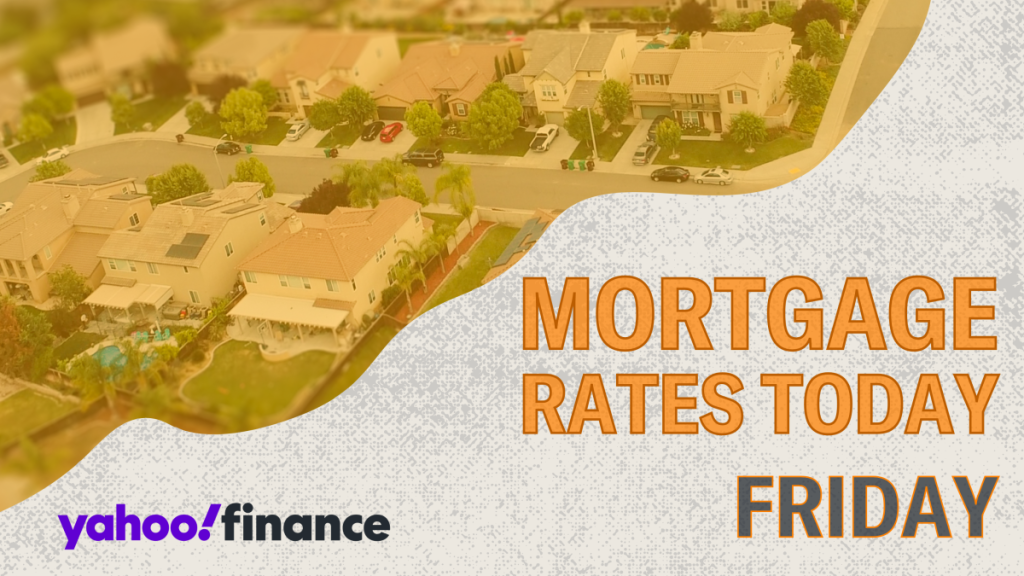
Mortgage rates are down a little bit today. According to Freddie Mac, the 30-year fixed mortgage rate has decreased by six basis points to 6.89%, and the 15-year fixed rate has fallen by seven basis points to 6.05%. Although interest rates have been steadily inching down, they haven’t made huge strides.
Rates have changed little despite volatility in the wider market, hovering within a 15-basis-point range for all of 2025. That stability suggests now could be a good time to buy a house. Rates are unlikely to move down much before the busy spring home-buying season kicks off.
Dig deeper: 5 strategies for getting the lowest mortgage rate possible
Have questions about buying, owning, or selling a house? Submit your question to Yahoo’s panel of Realtors using this Google form.
Here are the current mortgage rates, according to the latest Zillow data:
-
30-year fixed: 6.54%
-
20-year fixed: 6.21%
-
15-year fixed: 5.84%
-
5/1 ARM: 6.80%
-
7/1 ARM: 6.69%
-
30-year VA: 5.98%
-
15-year VA: 5.38%
-
5/1 VA: 6.05%
Remember, these are the national averages and rounded to the nearest hundredth.
Learn more: Should you lock in a mortgage rate?
These are today’s mortgage refinance rates, according to the latest Zillow data:
-
30-year fixed: 6.54%
-
20-year fixed: 6.25%
-
15-year fixed: 5.86%
-
5/1 ARM: 6.96%
-
7/1 ARM: 7.06%
-
30-year VA: 5.93%
-
15-year VA: 5.63%
-
5/1 VA: 5.99%
-
30-year FHA: 6.32%
-
15-year FHA: 5.85%
Again, the numbers provided are national averages rounded to the nearest hundredth. Mortgage refinance rates are often higher than rates when you buy a house, although that’s not always the case.
Learn more: Want to refinance your mortgage? Here are 7 home refinance options.
We’ve shown you the national average mortgage rates, but your individualized rate depends on various factors. Enter your information below to see how your location, loan term, and loan amount could affect your interest rate.
If you want to see how much house you can afford — regarding both home price and monthly payments — use our free Yahoo Finance home affordability calculator.
A mortgage interest rate is a fee for borrowing money from your lender, expressed as a percentage. You can choose from two types of rates: fixed or adjustable.
A fixed-rate mortgage locks in your rate for the entire life of your loan. For example, if you get a 30-year mortgage with a 6% interest rate, your rate will stay at 6% for the entire 30 years unless you refinance or sell.
An adjustable-rate mortgage locks in your rate for a predetermined amount of time and then changes it periodically. Let’s say you get a 7/1 ARM with an introductory rate of 6%. Your rate would be 6% for the first seven years, then the rate would increase or decrease once per year for the last 23 years of your term. Whether your rate goes up or down depends on several factors, such as the economy and housing market.
At the beginning of your mortgage term, most of your monthly payment goes toward interest. Your monthly payment toward mortgage principal and interest stays the same throughout the years — however, less and less of your payment goes toward interest, and more goes toward the mortgage principal or the amount you originally borrowed.
Learn more: Adjustable-rate vs. fixed-rate mortgages
A 30-year fixed-rate mortgage is a good choice if you want a lower mortgage payment and the predictability that comes with having a fixed rate. Just know that your rate will be higher than if you choose a shorter term and will result in paying significantly more in interest over the years.
You might like a 15-year fixed-rate mortgage if you want to pay off your home loan quickly and save money on interest. These shorter terms come with lower interest rates, and since you’re cutting your repayment time in half, you’ll save a lot in interest in the long run. But you’ll need to be sure you can comfortably afford the higher monthly payments that come with 15-year terms.
Read more: How to decide between a 15-year and 30-year fixed-rate mortgage
Typically, an adjustable-rate mortgage could be good if you plan to sell before the introductory rate period ends. Adjustable rates usually start lower than fixed rates, then your rate will change after a predetermined amount of time. However, 5/1 and 7/1 ARM rates have similar to (or even higher than) 30-year fixed rates recently. Before getting an ARM just for a lower rate, compare your rate options from term to term and lender to lender.
Yes and no.
According to Freddie Mac, mortgage interest rates have decreased for three consecutive weeks. However, those declines are relatively small — the 30-year and 15-year fixed rates have stayed in a 15-basis-point range since the beginning of 2025. That won’t make a huge difference in your monthly mortgage payment.
Mortgage rates will probably drop more before the end of the year, but the declines should be gradual.
Read more: When will the housing market crash again?
According to Freddie Mac, this week’s national average 30-year mortgage rate is down six basis points to 6.89%, and the average 15-year mortgage rate has decreased by seven basis points to 6.05%.
According to their January housing forecasts, Fannie Mae and the Mortgage Bankers Association (MBA) expect the 30-year mortgage rate to end 2025 at 6.50%.
Mortgage rates could increase here and there in 2025, but there’s a good chance they will actually decrease by the end of the year.

